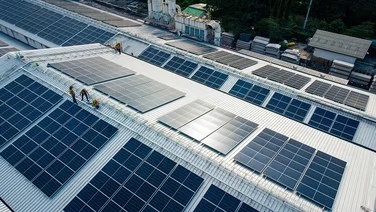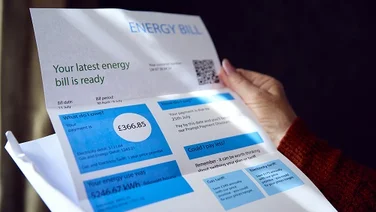Get Free Solar Panel Quotes
Find out how much solar panels would cost you
Do you need solar panels for your home or business? Fill in our form - Get a free quote - Start saving on energy bills
Why get solar panels?
- Generate free, green electricity
- Reduce your electricity bill by up to 64%
- Get paid for what you don't use
As featured in: 


News
The latest news, analysis, guides and opinion.

Mitsubishi launches new Ecodan heat pumps
The Ecodan R290 series now features three new 8.5kW, 10kW and 12kW models, suitable for larger and less well-insulated homes.
-
 1st Energy buys Ripple wind farms to keep green power going 1st Energy have ensured that Ripple Energy's customers won't lose out after it bought the financial-stricken energy provider's wind farms.
1st Energy buys Ripple wind farms to keep green power going 1st Energy have ensured that Ripple Energy's customers won't lose out after it bought the financial-stricken energy provider's wind farms. -
 BYD brand challenges Porsche with ‘crab walking’ Z9 GT EV Denza has announced it will launch the ZP GT, it's latest EV that it says is 'ten times better than anything else on the market.
BYD brand challenges Porsche with ‘crab walking’ Z9 GT EV Denza has announced it will launch the ZP GT, it's latest EV that it says is 'ten times better than anything else on the market. -
 Solar and storage sectors to add £5 billion to UK economy The UK could earn over £5 billion by hitting its solar targets, according to a report from Solar Energy UK
Solar and storage sectors to add £5 billion to UK economy The UK could earn over £5 billion by hitting its solar targets, according to a report from Solar Energy UK -
 Government updates Zero Emissions Vehicle Mandate The government said it will take measures to make it easier for car manufacturers to meet the demands of EV legislation, which aims to stop the sale of new petrol or diesel cars by 2030.
Government updates Zero Emissions Vehicle Mandate The government said it will take measures to make it easier for car manufacturers to meet the demands of EV legislation, which aims to stop the sale of new petrol or diesel cars by 2030. -
 Leapmotor launches in the UK with two new EV models The Chinese manufacturer has launched the TO3 compact electric car and the C10, a large electric SUV
Leapmotor launches in the UK with two new EV models The Chinese manufacturer has launched the TO3 compact electric car and the C10, a large electric SUV -
 Ofgem announces new rules to boost smart meter standards Ofgem has set out new rules in a bid to boost smart meter standards and compensation, including slashing waiting times for installations, repairs and compensation for customers with connectivity issues.
Ofgem announces new rules to boost smart meter standards Ofgem has set out new rules in a bid to boost smart meter standards and compensation, including slashing waiting times for installations, repairs and compensation for customers with connectivity issues. -
 More than 1 million UK buildings have solar panels installed Among the report, OS looked at ‘green roofs’, which they define as at least partially covered with vegetation, usually specifically installed on a water membrane.
More than 1 million UK buildings have solar panels installed Among the report, OS looked at ‘green roofs’, which they define as at least partially covered with vegetation, usually specifically installed on a water membrane. -
 Energy experts: Drop levies on electricity to cut energy bills Removing levies from energy bills would make low-carbon technology cheaper and more accessible, says group
Energy experts: Drop levies on electricity to cut energy bills Removing levies from energy bills would make low-carbon technology cheaper and more accessible, says group -
 Transparent solar cells can turn offices into energy hubs An EU-funded project has shown that transparent solar cells can turn modern office buildings into vital, urban energy hubs.
Transparent solar cells can turn offices into energy hubs An EU-funded project has shown that transparent solar cells can turn modern office buildings into vital, urban energy hubs.